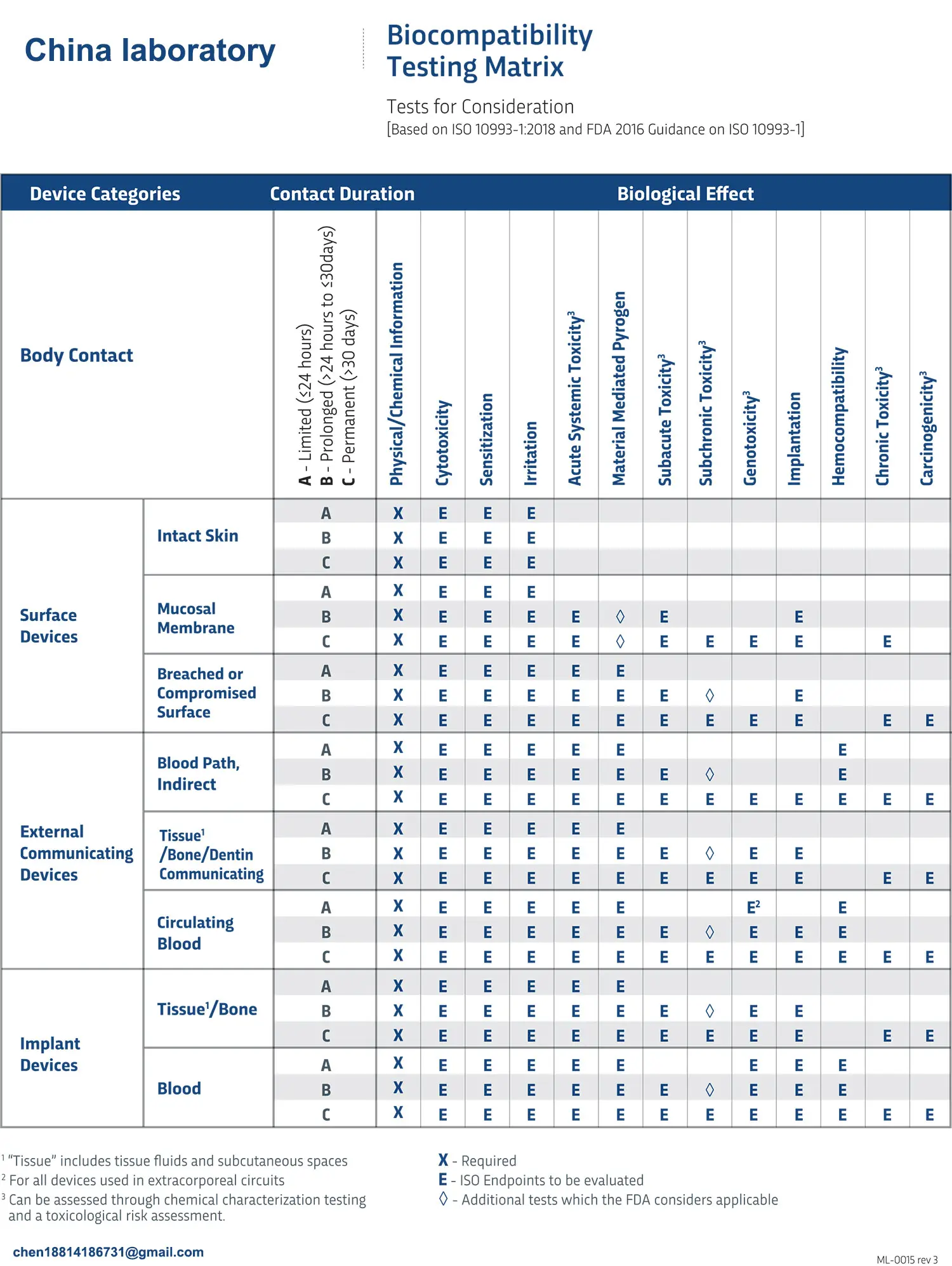
ISO 10993 Testing Lab
JJR in China is an iso 10993 testing lab, and products that typically require biocompatibility testing are usually medical products, including medical devices, pharmaceutical products, and hygiene preventive products. The standards referenced by the lab are primarily ISO 10993 and GB/T 16886, with the contents of the two standards being nearly identical.

ISO 10993 biocompatibility testing is mainly divided into the following parts:
1. Part 1: Evaluation and testing
2. Part 2: Animal protection requirements
3. Part 3: Genetic toxicity, carcinogenicity, and reproductive toxicity tests
4. Part 4: Selection of blood interaction tests
5. Part 5: In vitro cytotoxicity tests
6. Part 6: Implantation local reaction tests
7. Part 7: Ethylene oxide sterilization residuals
8. Part 8: Biological testing reference materials selection and quantitative guidelines
9. Part 9: Qualitative and quantitative framework for potential degradation products
10. Part 10: Irritation and skin sensitization tests
11. Part 11: Systemic toxicity tests
12. Part 12: Sample preparation and reference samples
13. Part 13: Qualitative and quantitative analysis of polymer medical device degradation products
14. Part 14: Qualitative and quantitative analysis of ceramic degradation products
15. Part 15: Qualitative and quantitative analysis of metal and alloy degradation products
16. Part 16: Toxicokinetics study design for degradation products and leachables
17. Part 17: Establishment of allowable limits for leachables
18. Part 18: Chemical characterization of materials
iso 10993 testing involves many items, but not all products require a fULl set of tests. The specific tests are determined based on the product’s usage method and performance characteristics.
The most commonly performed tests on the market are:
- Part 5: iso 10993-5 In vitro cytotoxicity tests (Biological evaluation of medical devices - Tests for in vitro cytotoxicity)
- Part 10: iso 10993-10 Irritation and skin sensitization tests (Biological evaluation of medical devices - Tests for irritation)
Testing Cycle:
- ISO 10993-5: 25 working days
- ISO 10993-10: 60 working days
Note: These tests involve the use of mice, and the mice require a period of rest. There are limitations on laboratory scheduling and capacity, so the actual testing cycle will depend on the laboratory’s schedule.
Email:hello@jjrlab.com
Write your message here and send it to us
 What Are the Testing Items of California Propositi
What Are the Testing Items of California Propositi
 E-Cigarette EU TPD Testing
E-Cigarette EU TPD Testing
 Testing Certification for E-cigarettes Exported to
Testing Certification for E-cigarettes Exported to
 What is Amazon US CPC Certification?
What is Amazon US CPC Certification?
 UK Toy Safety Regulation Standard EN 71-13
UK Toy Safety Regulation Standard EN 71-13
 What is EU UFI Registration?
What is EU UFI Registration?
 EU UFI Registration for E-cigarette E-liquid
EU UFI Registration for E-cigarette E-liquid
 How to get the MSDS Report for Electronic Cigarett
How to get the MSDS Report for Electronic Cigarett
Leave us a message
24-hour online customer service at any time to respond, so that you worry!




